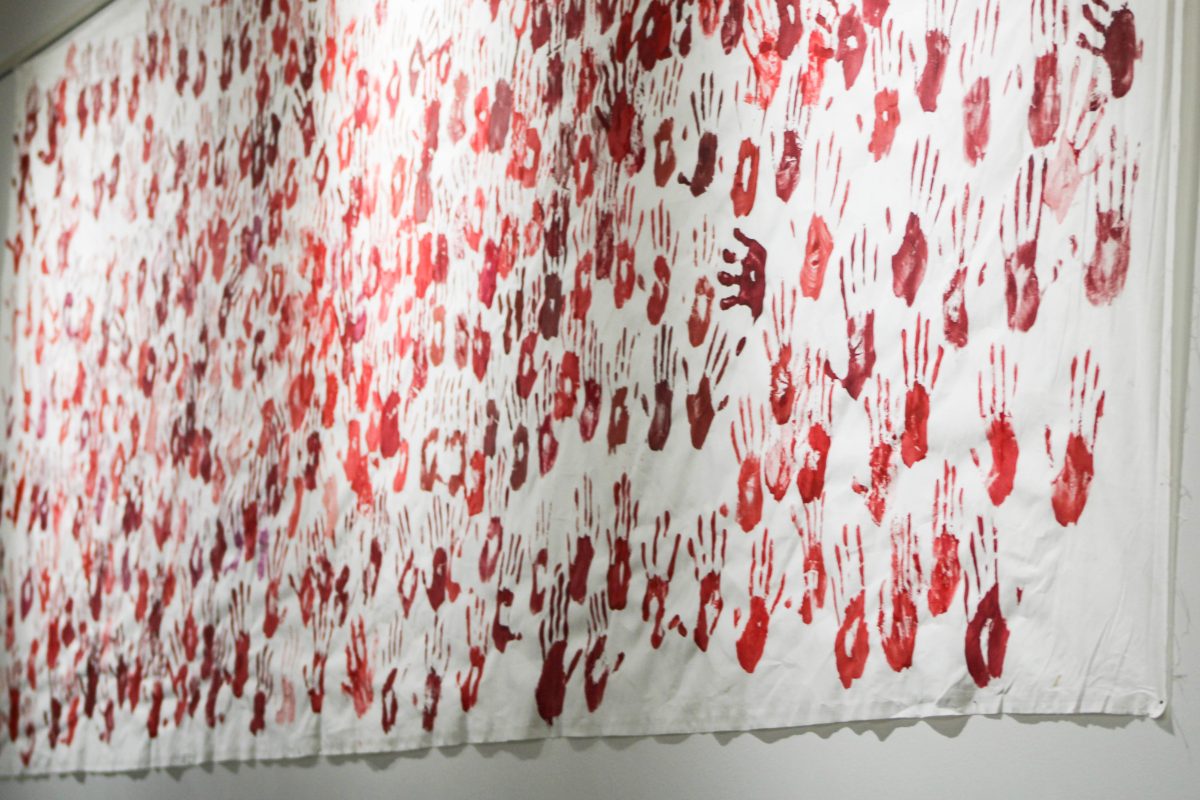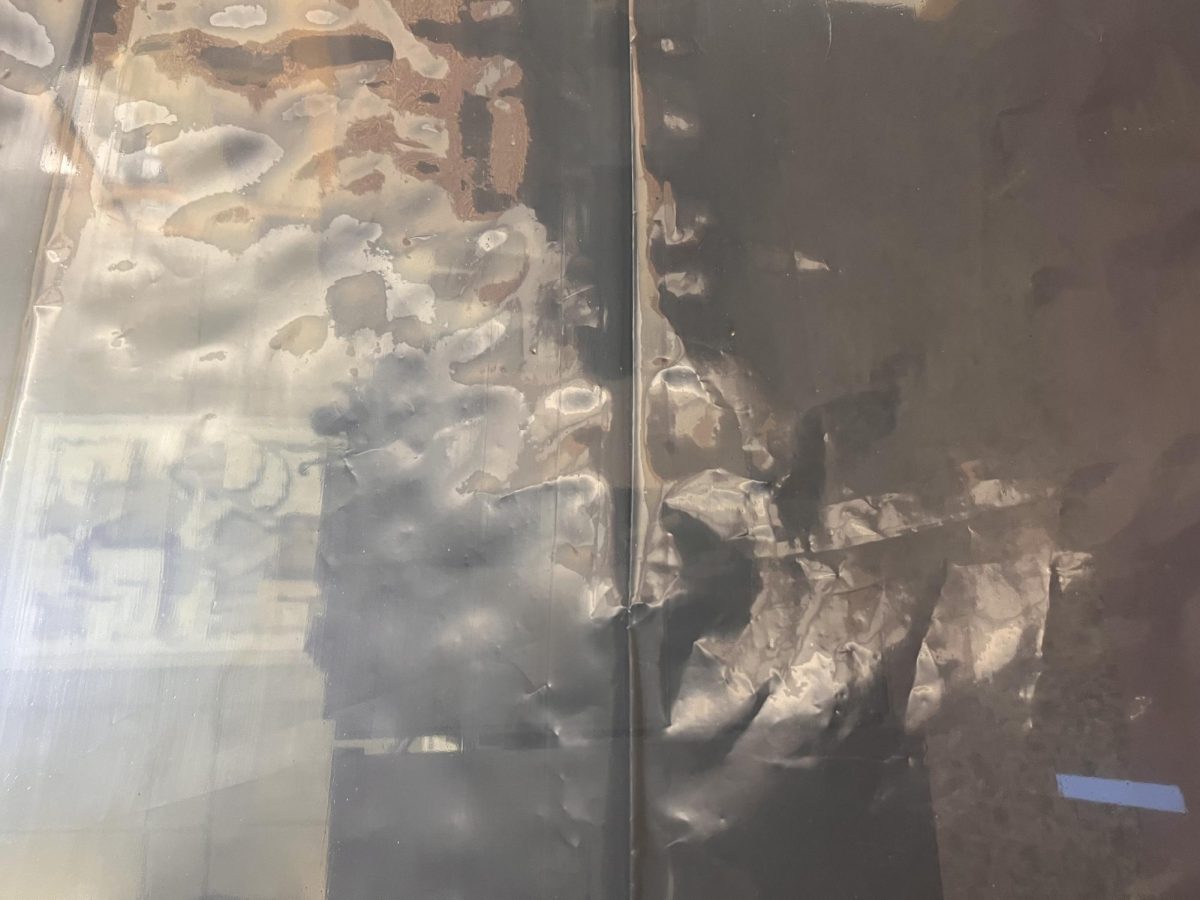On Feb. 28 and 29, Toni Nakai, a Navajo student at Weber State University, helped put together an interactive art exhibit in hopes of collecting 4,200 handprints to represent missing Indigenous people. Nakai set up a table in Shepherd Union with red paint and a 6-yard canvas. Students were asked to put a handprint on the canvas.
“Each hand represents a case, represents a person, a family member that didn’t come home,” Nakai said.
As of this year, 2,700 cases of missing or murdered Indigenous people have been reported to the Uniform Crime Reporting Program. However, the Bureau of Indian Affairs estimates that there are approximately 4,200 missing or murdered Indigenous people cases that have not been solved.
Nakai’s goal was for the canvas to represent each individual case. While she didn’t reach that goal, Nakai gained 345 red hands on the poster. Students can find this piece in the Skybridge in between the Shepherd Union and Student Services.
Nakai is not the only one making efforts to raise awareness to MMIP cases. Since 2011, Canadian artist Jaime Black has been working with museums and universities to create the REDress Project.
The REDress Project, a traveling exhibit that’s permanently displayed in the Canadian Museum of Human Rights, is an outdoor exhibit of empty red dresses.
According to Black, each empty dress represents an Indigenous woman who has gone missing or been murdered. Black’s hope for the exhibit is to raise awareness of the gendered and racialized violence against Indigenous women by marking their absence.
On top of these traveling exhibits, legislation has been passed to both attempt to stop the violence as well as bring justice to victims and their families.
Nakai highlighted this legislation in her exhibit, as well as dedicating part of it to the REDress Project. Three pieces of legislation in particular are highlighted: the Violence Against Women Reauthorization Act, the Ashlynne Mike AMBER Alert in Indian Country Act and the Savanna’s Act. Together, these pieces of legislation acknowledge Tribal authority of criminal justice, created Tribal AMBER Alert systems and increased coordination among law enforcement agencies in responding to MMIP cases.
There are many organizations working to lessen MMIP numbers. Nakai highlighted one in particular called Restoring Ancestral Winds. RAW is a nonprofit organization located in Sandy. They provide resources for MMIP as well as training and volunteer opportunities to further their cause.
“This is a thing that affects all Indigenous people; it’s become an epidemic,” Nakai said.
Nakai’s exhibit will be on display in the Shepherd Union bridge for all of March. More information about MMIP can be found on the BIA website, as well as organizations you can make donations to to help bring more missing Indigenous people home.






















